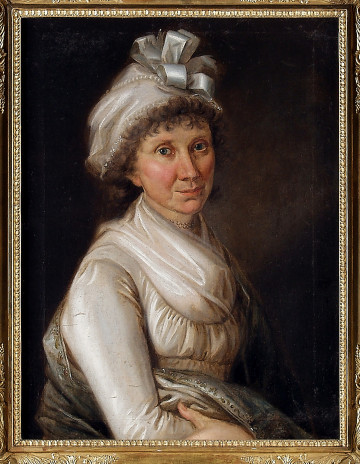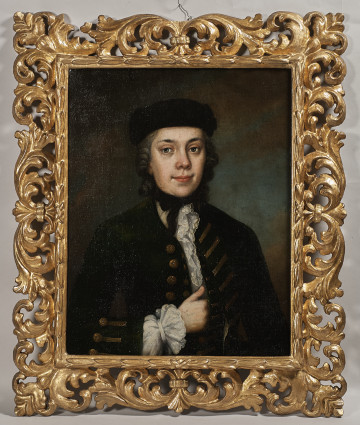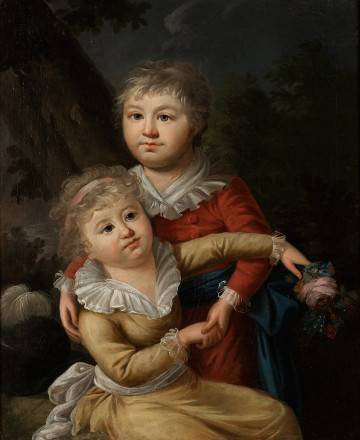
Portrait of Aleksandra Potocka, née Lubomirska
2nd half of the 19th century
Castle Museum in Łańcut
Part of the collection: European classics of modernity
The rugged landscape was introduced into modern painting by the Romantic painter Caspar David Friedrich. The son of a soap maker from Greifswald, then a part of the Swedish crown, he assimilated the ideas of the Nordic Renaissance through his studies in Copenhagen. He immortalised his homeland for patriotic reasons, although elements of the magnificent old civilisation appearing in his drawings and paintings were subjected to the forces of nature. The views with megaliths created in the first decade of the 19th century, inspired by the most famous dolmen complex near Nobbin, pointed precisely to the romantic cult of nature as a divine and eternal force. A hundred years later Max Kühn, a painter from Szczecin, like many of his contemporaries, deliberately referred to the motifs of Friedrich's œuvre, considered a classic of Pomeranian and German art, despite the anti-Prussian or anti-Federation overtones of the master's later works. These works did not include, for example, the depiction of oaks accompanying the images of megalithic tombs, which after the Napoleonic period acquired the meaning of Germanic permanence, unity and strength. The idea was again referred to during the Prussian Wars of the 19th century, and especially during World War I, when oak trees were used to create holy groves in field cemeteries. New meanings overlapped with Kühn's love of his small homeland when he painted the oak trees in Vilmnitz on the island of Rügen in May 1927. Not far from this site is a megalithic tomb, immortalised by the artist the year before. Reminiscent of an expressionistic set design, the frame with trees belongs to a series of patriotic views of Rügen, which became the property of the Provincial Museum of Pomeranian Antiquities (Provinzialmuseum Pommerscher Altertümer), opened in 1928.
Szymon Piotr Kubiak
Author / creator
Dimensions
cały obiekt: height: 65 cm, width: 97 cm
Object type
painting
Creation time / dating
Creation / finding place
Identification number
Location / status

2nd half of the 19th century
Castle Museum in Łańcut

3. ćwierć XVIII wieku
Castle Museum in Łańcut

1. ćwierć XIX wieku
Castle Museum in Łańcut
DISCOVER this TOPIC
Museum of King Jan III's Palace at Wilanów
DISCOVER this PATH
Educational path